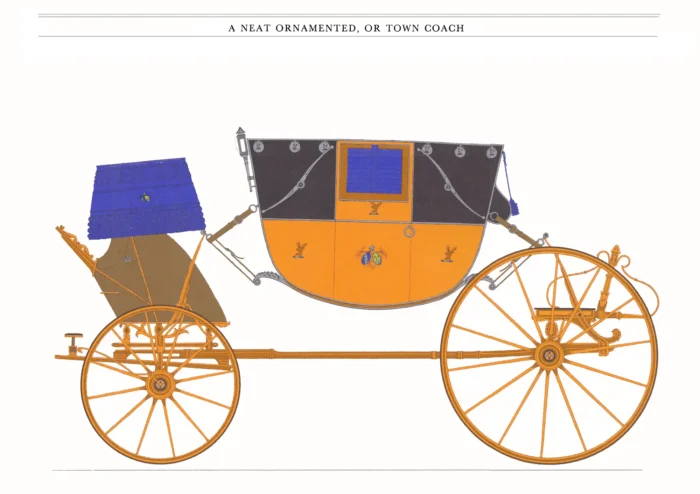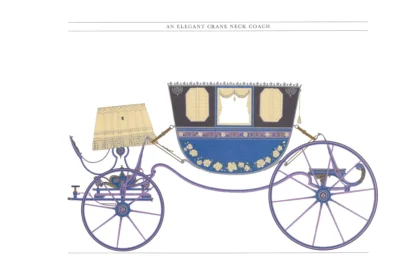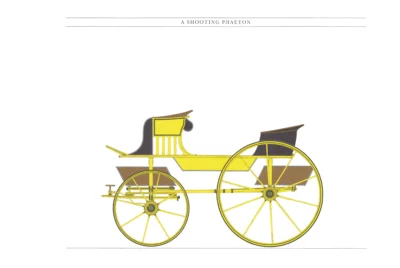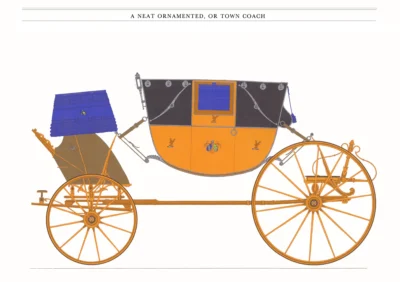Town Coach
£20.00
Town Coach (scroll down for a more detailed Description)
Published 1962 by © Hugh Evelyn Limited; drawn by Alan Osbahr
Size: c. 38 x 25.5 cm [14 ″ x 10 ″] – may vary slightly from printers’ cut 50 years ago
Printed on medium white cardstock weighing c. 140 g/sm2
Print is STANDARD size – shipping is the same for 1 to 10 prints (based on largest print size in your order) – see Shipping & Returns.
In stock
Description
Summary
A coach is a large, closed, four-wheeled, passenger-carrying vehicle or carriage usually drawn by two or more horses controlled by a coachman, a postilion, or both. A coach has doors in its sides and a front and a back seat inside. The driver has a raised seat in front of the carriage to allow better vision. It is often called a box, box seat, or coach box. There are many of types of coaches depending on the vehicle’s purpose. A coach with four horses is a coach-and-four. A coach together with the horses, harness and attendants is a turnout. A coach might have a built-in compartment called a boot, used originally as a seat for the coachman and later for storage. A luggage case for the top of a coach was called an imperial; the top, roof or second-story compartment of a coach was also known as an imperial. The front and rear axles were connected by a main shaft called the perch or reach. A crossbar known as a splinter bar supported the springs. In the 18th century the use of the ‘fifth wheel’ substituted for the pivoting fore-axle, and on which the carriage turned. Two essential shortcomings of the commonly used light carriage or Hungarian carriage were first, the front wheels were turned by a pivoting front axle, but these wheels were often quite small so the rider, carriage and horse felt the brunt of every bump on the road. Secondly, he recognized the danger of overturning. Carriages are still used for day-to-day transport in the United States by the Amish.
P R I C E
Additional information
| Weight | 0.0136 kg |
|---|---|
| Dimensions | 37.5 × 25.5 cm |





